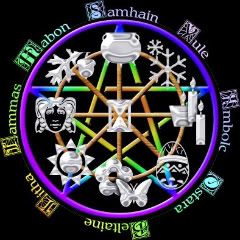
The word Pagan comes from the Latin word “Pagani” or “Paganus” which means people of the country.
This was a term given to people in these types of areas because they were not originally affected by the rise of Christianity into major cities. These people were a farming people at this time and still relied solely on the planting, growth, harvesting, and replanting of crops themselves for their survival.
The term Pagan as we know it today tends to represent any religions group, sect, cult that is not part of the mainstream Judeo-Christian beliefs. A Budhist, a Hindu, a Native American Shaman, a Satanist, and so on could all be called “Pagan” under this definition, however, it is the “pagans” of an earth based polytheistic religion that we are looking at today, and more so that of the “pagans” of Western Europe. It is to these “pagans” that we owe our modern form or neo-paganism and witchcraft too.

Although much is debated in regards to our pagan ancestors; there is one thing that most of us can agree on, and that is that we as a people honoured the cycle of the seasons of life in the world. We did this not only in reference to the crops that we grew but also the animals we hunted and even our own lives and our ancient gods. Many different tribes from throughout Europe and the surrounding areas paid homage to the Gods on these days as well as others that were more specific to their own gods and/or tribal “brand” of religion and religio-magic(k). We will be looking in depth at the 8 commonly accepted and honoured Pagan Sabbats or Holy Days of the year, 4 of which are the Greater Sabbats and the other 4 are the Lesser Sabbats. This is a time when no magickal working is done, save under great necessity; but a time for us to reflect on the changes of the seasons and the cycle of life, death, and rebirth.
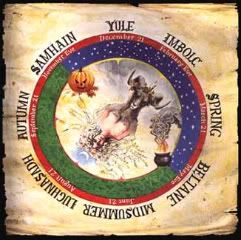
The wheel of the year can best be broken down first into 2 separate seasons or times of the year, the Dark and the Light.
The Dark Half
Despite what one would commonly think, the pagan year starts in the dark half of the year on Samhain and ends on Beltane. This day signifies the start of the dark half of the year and the beginning of a whole new year all together. It is called the dark half of the year because this is a time when the sun, a major governing factor to human survival, was moving further away from the earth and the land becomes enshrouded in darkness and death. Do not think of death as a negative though. Death was celebrated by our pagan ancestors as a means to start anew. It wasn’t death as we know it but more of a means to a new beginning. The dark half of the year is governed by the God aspect of divinity. The Goddess is always ever present but at this time of year she has become the Old Crone who is no longer capable of producing the fruit of her womb, the earth, for our survival. She retreats from the bountiful earth and goes into the Underworld where her duties at this time of year are to impart the ancient wisdoms and to help to usher the dead back home for a chance at rebirth. The Horned God is honoured starting at the dawn of the dark half of the year. It is at this time that our crops would no longer grow and our ancestors had to live off of the animals that were hunted for survival. Our Lord of the Hunt is pictured to be horned because the animals that we hunted were horned and he was the governing force behind our successful hunt and ultimate survival. It is also in the ends of the dark half of the year when the Goddess comes back from the underworld, rejuvenated and full of life once more. She returns in her maiden full of wonder and new possibility just as we are when we are children.
The Light Half
At Beltane, the light half of the year comes into the world. The Maiden Goddess and The New Sun God have grown into adolescents as the Dark Half of the year waned. On Beltane they join in sacred union for the fertility of all the earth and its people. The Maiden now becomes the mother because through this union she has become pregnant and swollen with the symbolic child that is Life on Earth. She is now the Mother of All Living. The Sun God has become a man and is now the King Stag and takes his seat at the Mother’s side. As the cycle of the year moves ever onward, The Gods slowly grow into their roles that are fitted to the seasons and the cycle of life. As the Light half of the year comes to an end The Mother Goddess becomes The Crone once she has given as much as she could to the world and becomes old and barren once again and needs to return to the underworld for some much needed rest. The God has gone from the young boy to the King Stag or The Green Man which is the consort of the Earth Mother. He has shown us the things we needed to know to work harmoniously with the Earth Mother so that we may reap her bounty. Just as the Goddess has grown and matured so does the God. No longer is he the youthful young “buck” frolicking in the woods but now he is grown into the mature aspect of God, The Horned One. We honour the gods at the end of the light half of the year for their sacrifices of self they have made for our survival. The Goddess readies herself for her trip to the Underworld and the God readies himself to rule once more.
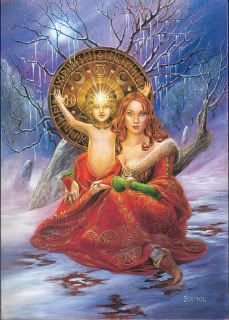

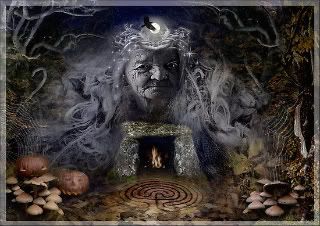

Now that we have a better understand of the wheel of the year and how it is associated to life, death, and rebirth; we can take a closer look at the Sacred Days individually. Below you will find information pertaining to each individual Sabbat including some cultural practices and a more in depth look at what each Sabbat is about on a case by case basis.

Samhain/ All Hallows Eve/Halloween (October 31st or November 1st )
Samhain (pronounced sow-en or sah-vain) is in essence the Witch’s New Year’s Eve.
This is the first of the 4 Greater Sabbats to be celebrated throughout the course of the year. This is the time when the world is in darkness. Its origins lie in that the earth is no longer fruitful and the people must survive off of what they were able to store and from the animals that they must hunt throughout winter. This is a time when the Goddess can no longer help us with her gifts of life, but must instead help us through her wisdom. It is a time when the God has grown to full maturity and has become the Horned God, our leader through the dark of winter. He graciously guides us through the mysteries of the darkness and blesses us with food to survive when the Goddess is no longer capable of bearing her fruit. It is also a time when the veil between the realm of the living and the realm of the dead are at its thinnest. It is at this time that we commune with the spirits of our ancestors and thank them for the knowledge they have passed down to us and look to them for guidance.
In modern times we no longer have to worry about things like hunting and storing our food due to modern technology and grocery stores but we are still ever mindful of the symbolic nature of this Sabbat. It is a time for us to remember our ancestors and the things that they have had to go through and also to acknowledge that despite our modern day conveniences, if it weren’t for the Gods we would not be. This is a time for us to be thankful for the things that we have and for us to appreciate the cycle of life that is ever present throughout the world.
Just as seeds are planted, grown to maturity, harvested, and the land falls into a death, where its decay causes the ability for it to be fertile the next year; similarities to this can be found throughout all things. Animals go through a period of birth, growth, and death which makes way for the birth of the new generation. This is also so with humanity. At this special time of year we acknowledge and honour the death aspect of the cycle of life.
We as Pagans know that Death is just another stage of life and the life is a constant endless cycle. Death is not the end, it is just the beginning, and this is why Samhain; the festival of the dead, is the beginning of the year.
Many customs of “Halloween,” have roots in paganism such as the carving of pumpkins. Our ancestors used to carve “evil” faces into pumpkins and other gourds and light them with a candle to scare away evil spirits. This makes perfect sense if you know the reasoning behind it. Not only was it a time when the veil between the worlds was at its thinnest and our ancestors could come and walk freely amongst us but it was also a time when other spirits could easily come too.
Another custom of “Halloween” is “Trick or Treating” wherein people dress up in costumes and go door to door and receive sweets. This is a practice that also dates back to our pagan ancestry at a time when Christianity was living side by side with us. Since it was logical that not only could our dead ancestors come back so could evil spirits, we would dress as “evil” creatures with masks as a means to “blend in”. If we were to be walking around after dark, we didn’t want to come across an evil spirit and have them hurt us or take us away. We dressed as if we were one of them so that we could trick them into thinking we were one of them. The Christians who would dress as these spirit would go door to door and receive “soul cakes” which were given in exchange for a promise to pray for the deceased family member that the soul cake came from.
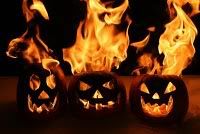

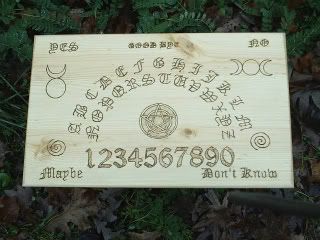
It was also customary for our pagan ancestry to set a place for the departed spirits at dinner. This is still a practice done by many to this day. Today we still carve our pumpkins as symbols of protection on this Holy Night. We adorn our altars with remnants of the Harvest in thanks of what has been provided to us. We give food and drink to the departed souls that commune with us in our circles and we do works of divination at this time.
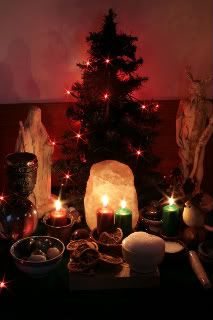
Winter Solstice or Yule (December 21st)
Yule or the Winter Solstice is the time when the sun is the furthest from the earth. This is a time where the world is at its darkest and it is the longest night of the year. For a couple days at this time of year, the sun seems to rise and set in the same place and not seem to move until miraculous the sun would start to make its way closer and closer. This is a time where our pagan ancestry would do rituals to coax the sun to return to the earth and warm the land once again. It is a time to honor the gods for being a constant presence in our lives and to be thankful for all of life’s gifts. This is the time when the “Sun God” starts to make his way back to the earth so that life can start anew. Yule is known as one of the Lesser Sabbats but by no means is it not a greatly revered holiday.
Our pagan ancestors held rites to “appease” the sun so that it would return again for spring. We in modern times know through the science of astronomy the way the planets move around the sun but this should in no way take away from the credit of the greatness of the power of God. This is a time for us to celebrate with one another and to come closer together. The warmth that we feel when we commune with one another is symbolic of the warmth that we will feel from the suns return.
The Christian Holiday of Christmas or the Birth of Christ is taken from this holiday. It is in essence the birth of the Sun God or the birth of The Son of God. Many modern customs of “Christmas” owe themselves to the customs of our Pagan Ancestry. The “Christmas” Tree dates back to Norse Pagans who would decorate trees with lights and sweets to appease their Gods, namely Odin. The Yule Log is another custom that dates back to these ancient pagans who would pour libations onto a decorated log and place it in the hearth fire to honour the gods. “Christmas Carolling” or Wassailing comes from these ancestors as well. The hanging of wreaths comes from our ancestors in Rome from their festival of Saturnalia. Mistletoe and Holly were symbols of life and rebirth to the Celts and were traditionally used at this time of year.
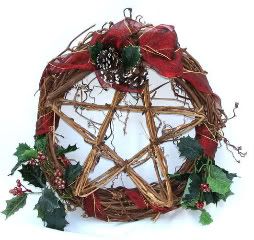
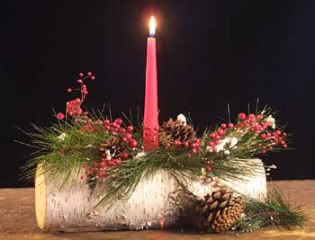
We as modern pagans decorate our altars with these items as well as our homes to honour the spirit of the season and the gods. It is a time for us to feel warmth within ourselves and the people around us where there is no warmth from the sun. It is our appreciation for each other and the gods and the return of the “light of the world” that gives us cause for celebration on this Holy Day.
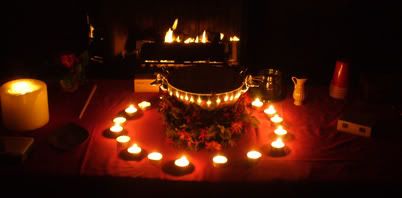
Imbolc/Imbolg/Candlemas/ (February 1st or 2nd )
The Sabbat of Imbolc is a Greater Sabbat and is sometimes called the “Feast of Lights”. It is at this time of year that the Sun God has returned to us. It is also the time when the Goddess makes her return as the Young Maiden. This Sabbat signifies the ending of winter and the return of Life and Light to the world. This sabbat is also known by other names that are more cultural or tribal specific.
This is the time of year when budding relationships are formed such as the one between the Maiden Goddess and the Sun God. February is the month for new lovers and budding relationships. We light candles for the Gods at this time not only as a means to “light” their path back to the earth but also to signify the sacred bond between the Sun God and the Maiden Goddess.
This time of year is a time to celebrate new beginnings. At this time of year some animals have already given birth to their first born of the season while others are swollen in belly and teats are full of milk. In some areas it was time to start to plough the land to prepare it for spring and to bless the seeds that will be planted as well as the agricultural tools that would be used.
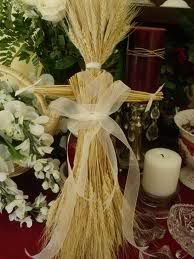
This is the season for us to pray for protection and prosperity. In some Celtic Culture, “dollies” were fashioned out of wheat or oat straw and laid in beds of white flowers holding wands tipped with acorns to signify the union of the youthful aspects of God and as a means to ensure prosperity in the upcoming planting season. At this time of year hearth fires were extinguished and re-lit to signify the end of the winter and the coming of the spring. Houses were also swept from front to back and the broom or besom placed at the front door to symbolize the removal of the old and the ushering in of the new. No matter the methods used to symbolize this union and new beginning the message rings clear; Now is the time to prepare, now is the time get rid of the old and welcome the new, a time to celebrate Life.
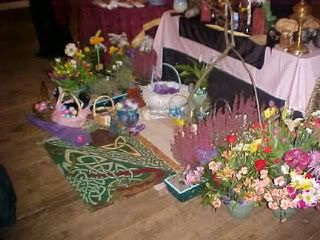
Ostara/Eostre/Spring Equinox/Easter (March 21st )
The Lesser Sabbat of Ostara or the Spring Equinox is a fertility festival. It is the time of year when we celebrate hope and renewal. This Sabbat though not always celebrated by all cultures of pagan Europe was at least acknowledged as the turning point of the seasons. Now was the time for our ancestors to plant their crops and pray to the deities to make them fertile. It was a time to pray for fertility of our livestock so that we would have food to eat and animals to help tend the fields.
Many customs and symbols of this ancient pagan festival have survived through the ages and are common place today even amongst Christians. It was our ancestors who would dye eggs bright colors and scribe symbols of fertility upon them and plant them in the earth. Perhaps that sounds an awful lot alike to the dying of Easter Eggs and hunting for them? Not only the dying of the eggs has continued on but even the modern day Easter Bunny has its pagan roots. The “March Hare” is a species of rabbit that is nocturnal most of the year but in March when mating season begins it is running rampant all day long. It was a long held belief in Europe that the “March Hare” was a great sign of fertility and rebirth.
The Germanic Goddess Eostre was the namesake for this festival amongst the Germanic People. Once could speculate that the name Easter comes as a derivative of this Ancient Goddess. As a means of making the pagan people more comfortable with the idea of conversion to Christianity; The Catholic Church placed “Easter” relatively close to this date and it too is a celebration of hope and renewal.

Though most of us aren’t farmers any more, we still celebrate this fertility festival. Our need for food has never changed, despite our change in the way we get it, and so it is at this time we pray for a bountiful year in all things. We pray for the fertility of the Earth so that it may sustain us again and we pray for the renewal of our spirit that we may move ever forward on our endeavours spiritual and mundane. As a sign of honouring the Gods we dress our altars in brightly colored flowers and eggs and say our prayers of thanks and prosperity.
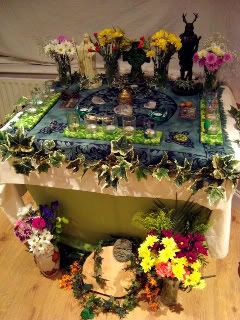
Beltane/Bealtane/Bealtine/May Day/Lady Day (May 1st)
The Greater Sabbat of Beltane is the Sacred Sabbat when the Goddess returns to ruling over the Earth. It is a fertility festival where our ancestors saw the Horned God sacrificing himself so that Sun God could become the King Stag and join in union with the Goddess for the fertility of the world. This is the most sensual of all the fertility festivals. At some point in our pagan history; our ancestors would enact the Great Hunt. This is where the young men of the tribe or the young priests of the clan would go on a sacred hunt to kill a stag, The King Stag. The young man who was successful in the hunt would take the blood of the stag and paint fertility symbols on his body. He was then led to a virgin priestess who was waiting to enact the Great Rite. This was a physical joining of male and female that symbolized the Horned One lying down for the young Sun God so that he may become the King Stag and lie in union with the Maiden Goddess so that her womb may swell with life and become the Mother Goddess.
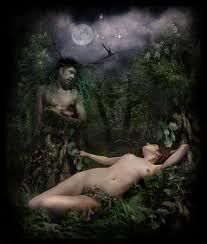
Not only did our ancestors do the above but they also would lead their livestock through the Bale Fires or bonfires that they made to protect them from illness and so that they would be fruitful and multiply. Our great ancestors in honour of the Great Mother would also symbolically enact the Great Rite by raising a “Maypole” which was a pole or a tree that was stationary in the ground, they would decorate it with brightly colored ribbons. Every person would take one of the ribbons and they would dance and sing weaving in and out of each other until the ribbons that started at the top found their way braided to the bottom. This was a symbolic way of acknowledging the Great Rite between the God and the Goddess. It is often speculated if the our ancestors would actually cut down a tree just for this reason many would say know as wood was sacred and in some places hard to come by. I tend to think that our ancestors would have just done this around a tree without cutting it down.
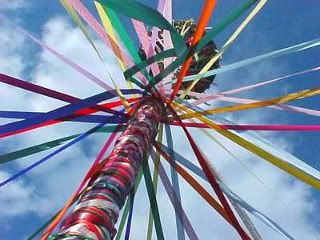
Many adults couples who share the same Pagan Faith often physically enact the Great Rite on Beltane in honour of the Gods while others who are solitary or in a regular coven choose to honour the Great Rite in other means such as the dance of the Maypole or by the symbolic joining of male and female through use of a Priapic Wand and lowering into a Cauldron or Chalice. The Priapic Wand is symbolic of the Phallus or Penis of the God and is created in a way that resembles this appendage, whereas the cauldron or the chalice, represent the womb of the goddess. This is often a popular time for a “handfasting” or a pagan marriage.


At this time of year we should be honouring Life. It is at this time of year that we are called to remember the sacrifices the gods make of themselves to provide us with the things we need to survive. This Sabbat teaches us to Love, not just one another but also ourselves. We should rejoice in the fruitfulness of the world and celebrate the abundance that is provided to us by the grace of the love of the Gods.
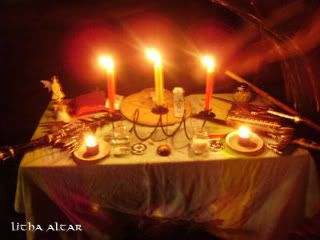
Litha/Midsummer/Summer Solstice (June 21st )
The Summer Solstice is a Lesser Sabbat but a great one none the less. This Sabbat comes at a time when the sun is closest to the earth. This is the time when the God has grown into a man. He is no longer seen as the young sun God but now is the embodiment of the “Green Man.” The Goddess’ belly is swollen with life at this time and we honour both of these gods for their gifts of life they have yet again bestowed upon us.
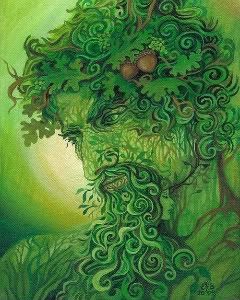
The myth of Witches flying on brooms stems from this festival. Our pagan ancestors would take their brooms and pitchforks and take to the fields. They would straddle their brooms and jump as a way to show the crops how high to grow. Bon fires were lit at this festival as well as the rest of them because fire is a symbol of life. The midsummer bale fires symbolized the triumph of light over darkness.
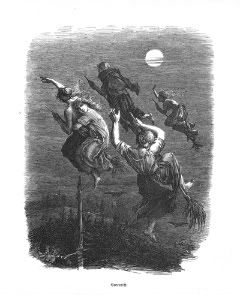
At this time of year, we as modern pagans celebrate the growth in the world and within ourselves. It is at this time we take a moment to reflect on ourselves and let the Light of the Sun pierce our inner most selves to illuminate our spirit so that we may grow as the bounty in the world grows.
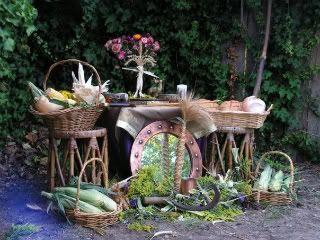
Lammas/Lughnasadh (August 1st)
Lughnasadh is the last of the Greater Sabbats and is the first harvest. This is a Sabbat where our ancestors would gather the first of the crops. This was the time when the bounty of the Goddess has come into fruition. Our Ancestors would take the first of the yield and show thanks to the Gods for the life sustenance that has been provided to them. The pagans of old would take a portion of what they gathered and give it back to the Gods in a manner of thanks. Often times these pagan people would burn a third of the yield as a sign of self sacrifice just as the gods have sacrificed for us throughout the year. In some cultures a “Wicker Man” was made from the grain that was harvested and it was filled with other items from the harvest for “sacrifice” often times our ancestors also offered human sacrifice as well as animal sacrifice in these large structures they built for the gods. They would erect these embodiments and set them ablaze on this sacred of days.
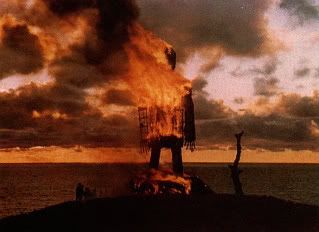
In modern times we do not harvest the crops ourselves any more but this should not deter us from paying homage to the gods for what they have given us. At this time we should reflect on how lucky we are for the things we have gotten throughout the year. Celebrate that we have been given another day to do good by ourselves and each other. This is a time for self reflection on the things we have reaped from the things we have sown. We should take time to give back to the Earth for what it has given to us. On this Sacred Day let us be thankful for what it is that we do have and learn from our mistakes so that we can have a better tomorrow.

Mabon/Autumn Equinox (September 21st )
The Lesser Sabbat of Mabon is the last Sabbat of the year. Some consider this Sabbat to be the 2nd of 3 harvests with Samhain being the final wherein others see this as the final harvest and do not recognize Samhain as a Harvest Festival. The Sabbat of Mabon is a harvest festival where the Goddess is honoured and thanked for all the gifts of life she has given. It has been a long journey for the Goddess and she has grown weary. She has given all that she could for her people and is becoming old and withered like the crops on the Earth. The Green Man aspect of the God has matured even Further and he has become the Horned One. No longer is he a god of the crops, he has become the God of the Hunt. The Great Hunter will guide us through winter so that we may see another spring.
At this time our ancestors would honour the gods with acts of thanksgiving. Our people would join together and dance and sing for the Gods much like they did at all festivals. It was at this festival though we said good bye to the light half of the year and welcomed the dawning of the dark half. We made preparations for the winter to come and got our affairs in order so that we may sustain as the sun drifts further from the Earth.

We as modern pagans should take this time of year to honour the gods yet again for all that they have provided us. We should take time to show thanks for the little things life has given us as well as the big. We should find peace within ourselves and be comforted in knowing that we have done all that we could do. At this time of year let us be thankful to the Gods and each other. Without all of our efforts together we would not survive. The Wheel of the Year has taught us that Life is always spinning ever onward in its different incarnations. No ONE incarnation is more important than the next. They are equal as we are ALL equal. We must celebrate each other and life and enjoy what we have, always looking forward to a brighter tomorrow.
I have written this essay on the Pagan Sabbat in hopes to educate our Next Generation Pagans on the true meaning of being a follower of the Old Ways. I hope that after reading this you can recognize the beauty in the gift of the cycle of life and apply its lessons to every day dealings. There is much more to the world then our petty problems and we should look to our history for the answers to the questions of tomorrow. Let us all be ever mindful that there is more to the world than meets the eye and let us recognize the greatness of Life just as our ancestors did.
By Symandinome
